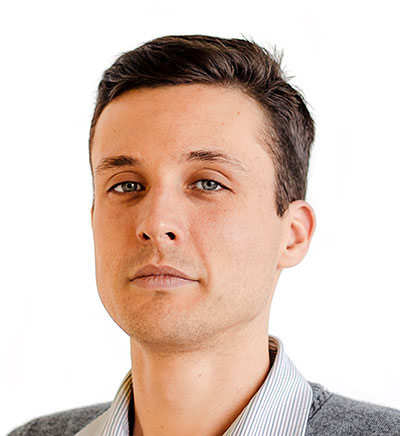Indefinite Growth on a Finite Planet Is Madness

STORY INLINE POST
Q: What is circularity and what is its relation to mining?
A: Circularity is a regenerative economic model that seeks to preserve the value of resources and materials for the longest time possible. Circularity goes well beyond recycling. The concept of recycling may be the tip of the iceberg but underneath the surface there is a wide array of processes like reutilization, redesign, remanufacturing or repair. Circularity is about elongating the life cycle of products and getting over the linear model where everything is disposed of, creating huge amounts of waste.
Mining is key to the circular economy. The industry needs to provide materials that are essential to our planet’s future. We need to combat climate change, for example. To do that, we need technologies that favor decarbonization. These technologies require large amounts of minerals. If we are to fulfill the Paris Agreement on climate change, we will need eight times more minerals. Nevertheless, if the mining industry itself does not become more circular, then the whole process will become futile. Mining, which is at the base of the economy, also has to go green.
Q: How advanced is the world economy in terms of circularity?
A: The world is moving away from a linear economy based on disposal and waste and is entering the circular economy. The World Economic Forum’s yearly circularity report noted a decrease from 9 to 8.6 percent in the planet’s circularity rate. Some countries like the Netherlands have a 25 percent rate. Latin America’s percentage rate is low but this represents an opportunity to take a leap directly into the circular economy. If we adopt international best practices and businesses, governments and societies work hand in hand toward a common objective, then it is feasible to have a circularity rate of over 60 percent in Latin America. Mexico has a special opportunity because it is a mining country with a strong manufacturing matrix. Within a circular framework, Mexico can use its mining industry to boost its entire economy.
Q: To what extent does the mining industry embrace circularity?
A: The mining industry has a good attitude toward tracing its social and environmental impacts. Nevertheless, the industry is very complex. For example, it is common to divide it into three scopes. Scope 1 relates to actual mining operations. Scope 2 refers to energy use within mining processes. CO2 emissions in these two scopes are 4 percent of global emissions. Scope 3 includes the mining industry’s supply chain. When you add scopes 1, 2 and 3 they result in 28 percent of the world’s CO2 emissions.
The mining industry has focused on implementing circularity in the first two scopes. But there is a great deal of work to be done in Scope 3. Circularity has a lot to offer there. The potential is huge. The carbon footprint can be reduced, while simultaneously generating an ecosystem of providers around the industry, like recyclers and repairers. These providers will set up shop in the vicinity of mining operations, galvanizing the local economy. Circularity is an ideal way for mining to positively impact the regions where it operates.
Q: What is the relationship between the circular economy and Industry 4.0?
A: They are two sides of the same coin. Circularity cannot become a reality without the tools of Industry 4.0, such as AI-based simulations, IoT and blockchain. Conversely, circularity gives these technologies a purpose. Mining is facing a huge paradigm change. For example, starting in 2022, the London Metals Exchange will not deal in copper and other metals that are not completely traceable. All social and environmental metrics will have to be traced every step of the way. Machine learning and IoT, but especially blockchain, are ways to guarantee traceability. It is no coincidence that the blockchain initiative at the World Economic Forum includes six major mining companies. This also represents an opportunity for Mexico’s entrepreneurship environment, as Industry 4.0 services will have great demand. Mining is a great engine for growth in Mexico and Latin America.
Q: What is the role of mining METS in the circular economy?
A: It is crucial. METS have to look at the design of their products to guarantee circularity throughout the industry. They have to prioritize certain materials that are recyclable. Equipment has to be designed so that it can be easily taken apart and repaired. Planned obsolescence is no longer acceptable. Mining needs products that are designed based on circularity principles. Circularity is not about damage control. It is not about struggling to recover waste generated by linear processes. Rather, circularity is about achieving social and environmental outcomes by design.
Q: Why is circularity a sound business practice?
A: The market is aware of the adverse effects of linearity. The consumer is demanding a new way of doing business. The final consumer will not put up with unsustainable products anymore.
This goes beyond consumers. Financial markets are encouraging circular business models and punishing linear ones. If a miner has no traceability and behaves irresponsibly, his access to capital will be more expensive. In fact, in the near future, unsustainable business models will have no access to capital at all.
Circularity is a model that makes more business sense than linearity. I am involved in a project called Neptuno Pumps, for example. Ever since we adopted a circular model, we have been growing at 30 percent per year. Circularity is a good business model for the manufacturer and for the consumer. Products are cheaper, more durable, more efficient and do not generate waste because it too can be transformed into new raw materials.
Centro de Innovación y Economía Circular (CIEC) promotes the transition to a circular economy from the driest desert in the world.








 By Alejandro Ehrenberg | Journalist and Industry Analyst -
Tue, 09/01/2020 - 16:39
By Alejandro Ehrenberg | Journalist and Industry Analyst -
Tue, 09/01/2020 - 16:39









